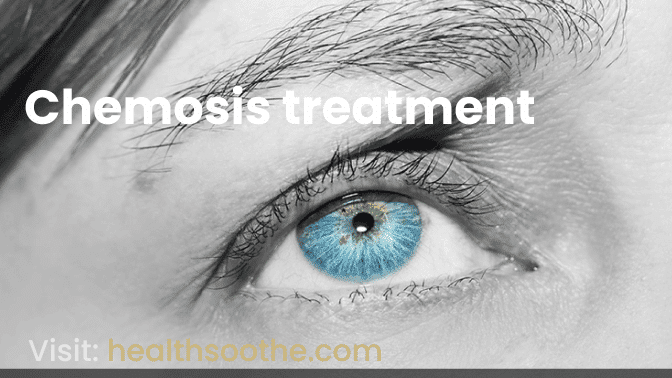Quick Facts About Somuroro
The symptoms of somuroro are easily confused with signs of other issues with the breasts that involve an increase in the size of the breasts and pain in the breasts. However, the tenderness of the breasts and the timing of the appearance of these symptoms can easily help to differentiate between somuroro and other breast inflammation and pain conditions.
Somuroro is a Yoruba term that describes the engorgement, heaviness, mild pain, and secretion that affects the breast when a woman is close to her menstrual period or that remains regardless of the time of the month it is. It is believed, among local herbalists, that somuroro prevents a woman from conception and should be treated with herbs. However, it does not only affect sexually active women. Some women who are in their menopausal stage have complained of the symptoms of somuroro.
In English, somuroro is usually called Mastalgia, and some people erroneously call it Mastitis. It is different from mastitis because it is not caused by an infection, and it does not make the breasts hard. Somuroro is more a hormonal condition than an infection.
In this article, you will understand the symptoms of somuroro, what it is called in English, and the available treatment that will help you address the symptoms. Also, you will be able to distinguish between the types of somuroro and what treatment is effective against each type.
What is Somuroro?
Somuroro is the tenderness and swelling of the breast that happens in women during their menstrual cycle. It happens during ovulation and lasts till when menstruation starts. It is believed but unproven that somuroro inhibits the ability of a woman to conceive and is mostly treated by using herbs. The timing of the appearance of somuroro makes it difficult to categorize it as a disease or a normal response to the hormonal changes that occur in a woman’s body during certain periods of her menstrual cycle.
Somuroro present symptoms that are similar to Mastalgia and Mastitis, and can cause quite a scare for most women. Some women also believe its symptoms signify breast cancer but they do not. Somuroro does not present lumps as part of its symptoms. Although the pain that comes with somuroro can vary from mild to intense, it can only originate from the parts other than the breasts itself.
Its effect on fertility depends on how the hormones are in the affected individual’s body and how they impact the course of conception.
Types of Somuroro
Although most people believe they have somuroro figured out, there are different types of somuroro and although there may be similarities in symptoms, they can be differentiated by the age of the affected person and the timing of symptom appearance.
Cyclic Somuroro
This type of somuroro occurs when in accordance with the menstrual cycle. They are usually recorded in women who are in their active reproductive years and it usually begins with ovulation and ends with menstruation.
Cyclic somuroro is directly linked to the level of hormones present in the body of the affected individual and can be treated using hormonal therapy.
The breasts become heavy and sometimes secrete fluid from the nipple as though the affected person is pregnant. Also, there might be pain in the breast or around it, which can be severe or mild. However, the pain, swelling, and fluid secretion ends when menstruation begins.
Read more: Know the Fact – Does Pressing Breast Cause Sagging?
Non-Cyclic Somuroro
This type of somuroro occurs mostly in women that are in their menopausal stage and do not have their reproduction dictated by hormonal changes. In essence, they are no longer in their active reproductive years. The symptoms of somuroro exhibited in this case is similar to the cyclic somuroro. The difference is in the age of the affected person (which may be about 50 years and above), and the frequency of symptoms.
In non-cyclic somuroro, the symptoms persist for a long time, even years. The breasts are tender, there is pain around the breasts or in the breasts, and there may be secretions from the nipples. While the affected people may not be in their active reproductive years, they still have these hormones and need to visit a doctor for further tests and diagnosis.
Causes of Somuroro
The cause of somuroro is strictly hormonal. Although there are believes that somuroro bears some resemblance to mastitis and might be a precursor to breast cancer, these believes are false. Mastitis occurs as a result of a bacterial infection of the breasts, while breast cancer has a primary symptom of lumps in the breasts.
Somuroro does not usually present lumps in the breasts since its cause is usually hormonal. The female sex hormones, estrogen and progesterone, are responsible for the menstrual cycle and influence the possibility of conception greatly. Therefore, a rise in the amount of progesterone, otherwise called pregnancy hormone, may lead the body to prepare for a possible conception, hence, the increase in breasts size and fluid secretion from the nipples.
In some cases, the level of progesterone may be too high in some individuals, necessitating their need for hormonal treatment.
Symptoms of Somuroro
Somuroro manifests in very familiar ways to many women. These symptoms are easily recognized and can be easily mistaken for other conditions. They include:
- Swelling of the breasts
- Pain on or around the breasts
- Fluid discharge from the nipples
- Pain appears some days before menstruation begins
- Tender breasts
Treatment of Somuroro
Since somuroro is a condition that is brought on as a result of hormonal interaction and the body chemistry, it is best tackled by addressing the discrepancies in the concerned hormones. In this case, the hormones are usually estrogen and progesterone.
While herbalists in the Southwestern part of Nigeria use herbal remedies to address somuroro, the western world addresses the issue through hormonal therapy. Before the commencement of treatment, the doctor carries out different tests to help with the right diagnosis. In some cases, each symptom is treated and investigated in isolation, especially in non-cyclic somuroro.
The treatment for cyclic somuroro and breast pain include:
- Elimination of caffeine from your beverage list
- Improving your diet by prioritizing low-fat foods
- Using prolactin inhibitors such as Bromocriptine
- Increase male hormone in the body through the use of Danazol
- Use medications that inhibit estrogen production
Treatment for non-cyclic somuroro include:
- Improved diet for post-menopausal life
- Exercising
- If tests show cysts in the breasts, an aspiration may be done.
- Administration of pain relievers.
Conclusion
Somuroro is a commonly mentioned issue among women in Nigeria. Although it affects a lot of people, they hardly speak about it outside their cycle. It is believed that this condition causes infertility and the possibility of its veracity is high since it is caused by hormonal imbalance.
There is a link between its symptoms and high prolactin. Estrogen, or progesterone level, which makes hormone therapy one of the most effective treatment for this condition. However, there is always the option of using Nigerian herbs for hormonal imbalance for treatment.
Related reading



